Abstract
A method is described for measuring transit time through the gut which requires the collection of only one stool. A dose of 20 radio-opaque markers is given to the subject on each of three consecutive days with breakfast, each dose of marker being of a different type. The first stool passed after rising on the fourth day is collected and its marker content analysed. The method has been validated in 15 subjects by comparing it on 36 occasions with mean transit time measured by a continuous marker technique (MTT-C). In 35 of these studies transit measured from a single stool (SST) and MTT-C were significantly correlated R = 0.78 P less than 0.001. In one study the designated stool contained none of the SST markers. An alternative way of validating the SST method is described by comparing it with the average of the three mean transit times from three separate doses of marker (MTT-S). The average MTT-S agreed very closely with MTT-C in 36 studies R = 0.94 P less than 0.001 and proved a satisfactory alternative method for validating transit techniques. In a total of 66 studies in 22 subjects average MTT-S correlated significantly with SST, R = 0.85 P less than 0.001.
Full text
PDF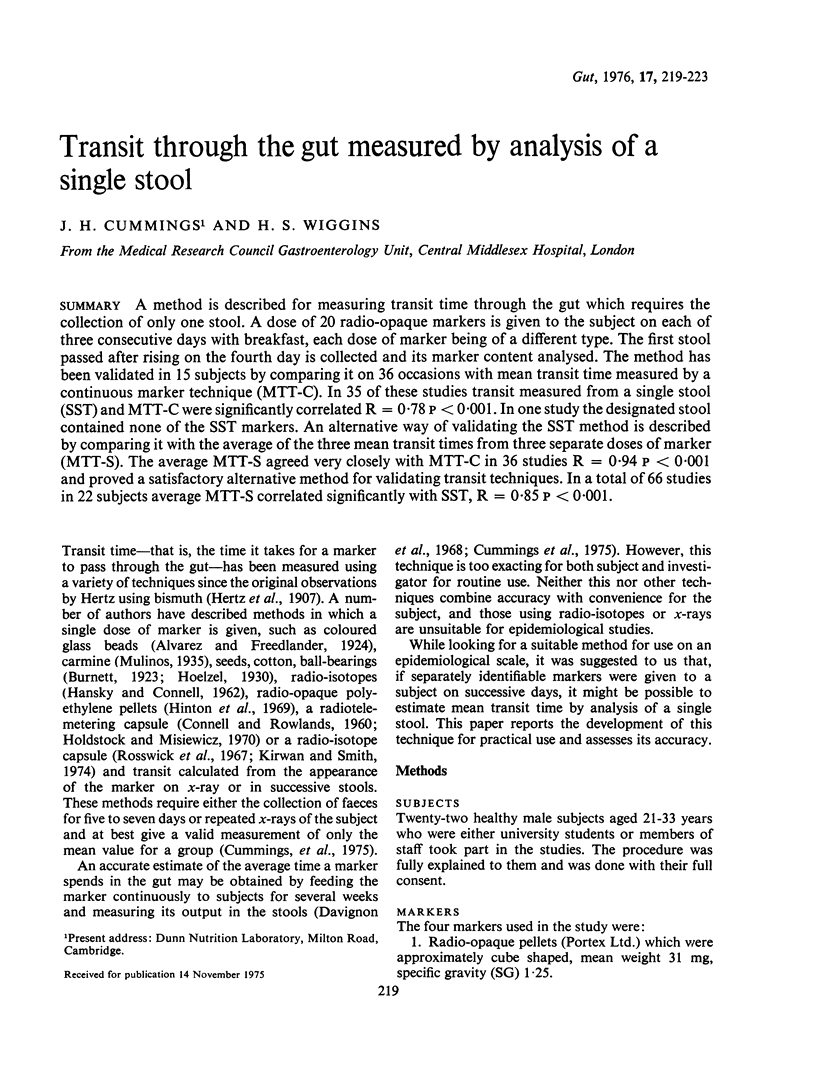
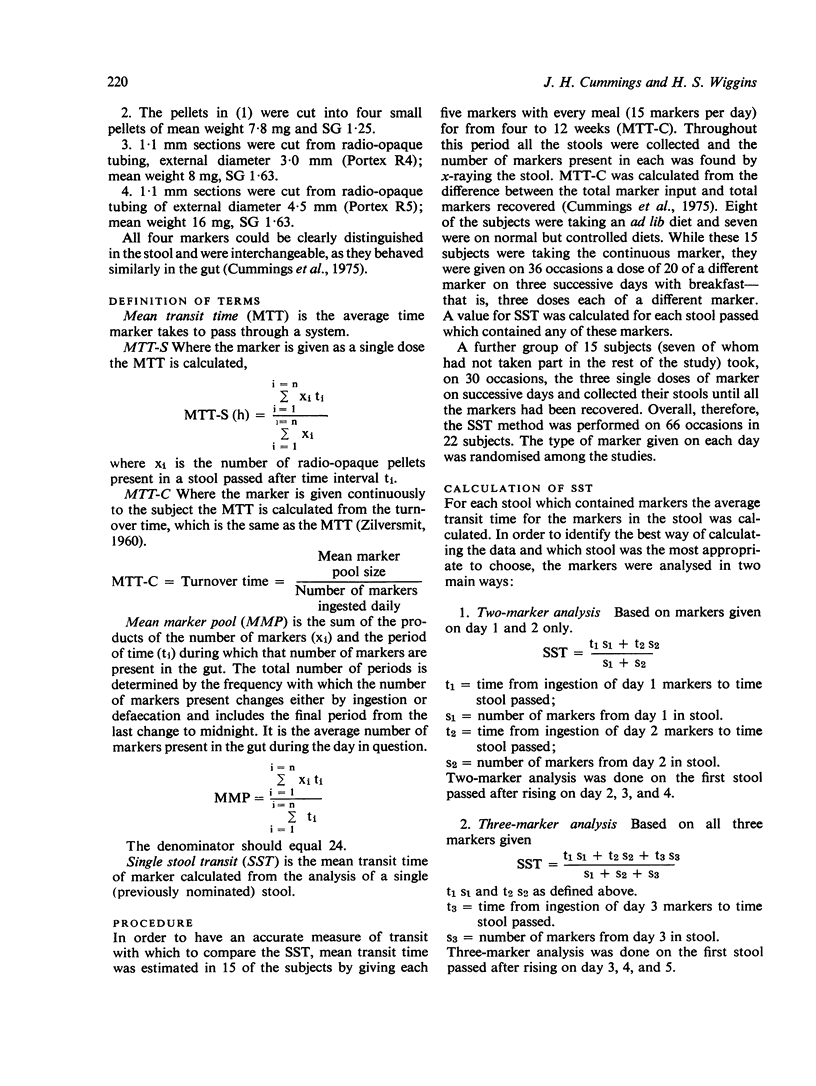
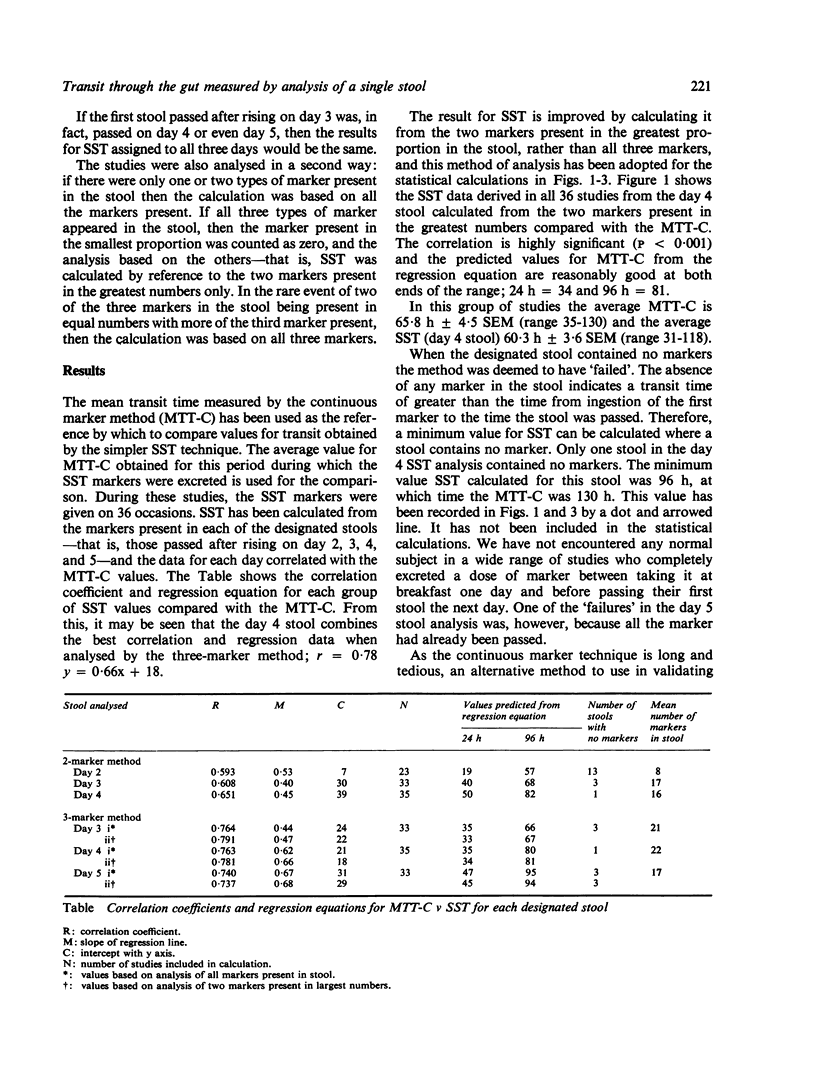
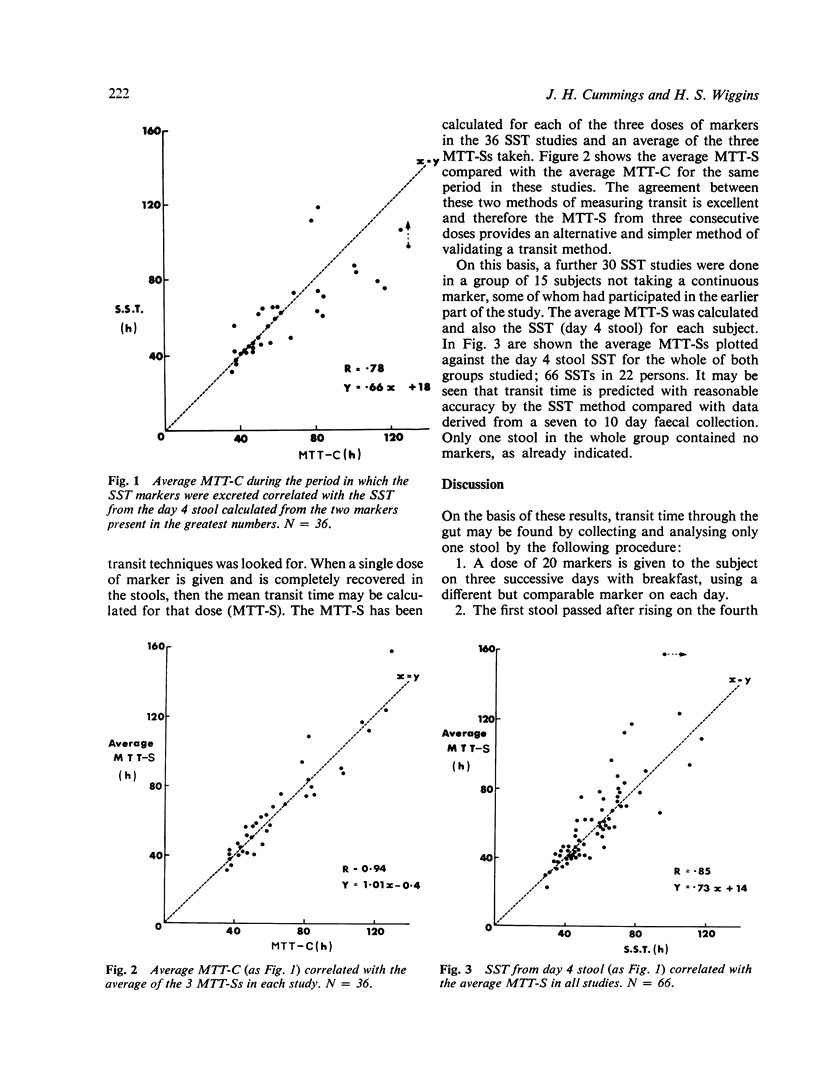
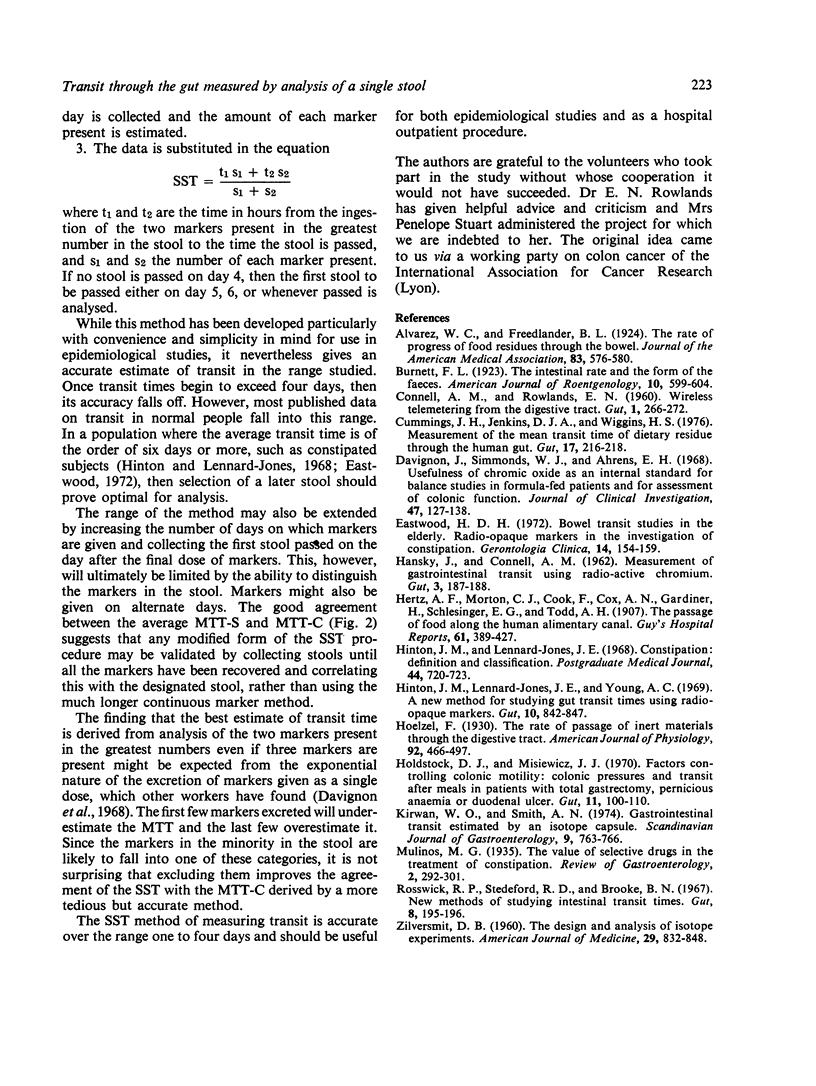
Selected References
These references are in PubMed. This may not be the complete list of references from this article.
- CONNELL A. M., ROWLANDS E. N. Wireless telemetering from the digestive tract. Gut. 1960 Sep;1:266–272. doi: 10.1136/gut.1.3.266. [DOI] [PMC free article] [PubMed] [Google Scholar]
- Cummings J. H., Jenkins D. J., Wiggins H. S. Measurement of the mean transit time of dietary residue through the human gut. Gut. 1976 Mar;17(3):210–218. doi: 10.1136/gut.17.3.210. [DOI] [PMC free article] [PubMed] [Google Scholar]
- Davignon J., Simmonds W. J., Ahrens E. H. Usefulness of chromic oxide as an internal standard for balance studies in formula-fed patients and for assessment of colonic function. J Clin Invest. 1968 Jan;47(1):127–138. doi: 10.1172/JCI105703. [DOI] [PMC free article] [PubMed] [Google Scholar]
- Eastwood H. D. Bowel transit studies in the elderly: radio-opaque markers in the investigation of constipation. Gerontol Clin (Basel) 1972;14(3):154–159. doi: 10.1159/000245387. [DOI] [PubMed] [Google Scholar]
- HANSKY J., CONNELL A. M. Measurement of gastrointestinal transit using radioactive chromium. Gut. 1962 Jun;3:187–188. doi: 10.1136/gut.3.2.187. [DOI] [PMC free article] [PubMed] [Google Scholar]
- Hinton J. M., Lennard-Jones J. E. Constipation: definition and classification. Postgrad Med J. 1968 Sep;44(515):720–723. doi: 10.1136/pgmj.44.515.720. [DOI] [PMC free article] [PubMed] [Google Scholar]
- Hinton J. M., Lennard-Jones J. E., Young A. C. A ne method for studying gut transit times using radioopaque markers. Gut. 1969 Oct;10(10):842–847. doi: 10.1136/gut.10.10.842. [DOI] [PMC free article] [PubMed] [Google Scholar]
- Holdstock D. J., Misiewicz J. J. Factors controlling colonic motility: colonic pressures and transit after meals in patients with total gastrectomy, pernicious anaemia or duodenal ulcer. Gut. 1970 Feb;11(2):100–110. doi: 10.1136/gut.11.2.100. [DOI] [PMC free article] [PubMed] [Google Scholar]
- Kirwan W. O., Smith A. N. Gastrointestinal transit estimated by an isotope capsule. Scand J Gastroenterol. 1974 Nov;9(8):763–766. [PubMed] [Google Scholar]
- Rosswick R. P., Stedeford R. D., Brooke B. N. New methods of studying intestinal transit times. Gut. 1967 Apr;8(2):195–196. doi: 10.1136/gut.8.2.195. [DOI] [PMC free article] [PubMed] [Google Scholar]
- ZILVERSMIT D. B. The design and analysis of isotope experiments. Am J Med. 1960 Nov;29:832–848. doi: 10.1016/0002-9343(60)90117-0. [DOI] [PubMed] [Google Scholar]


